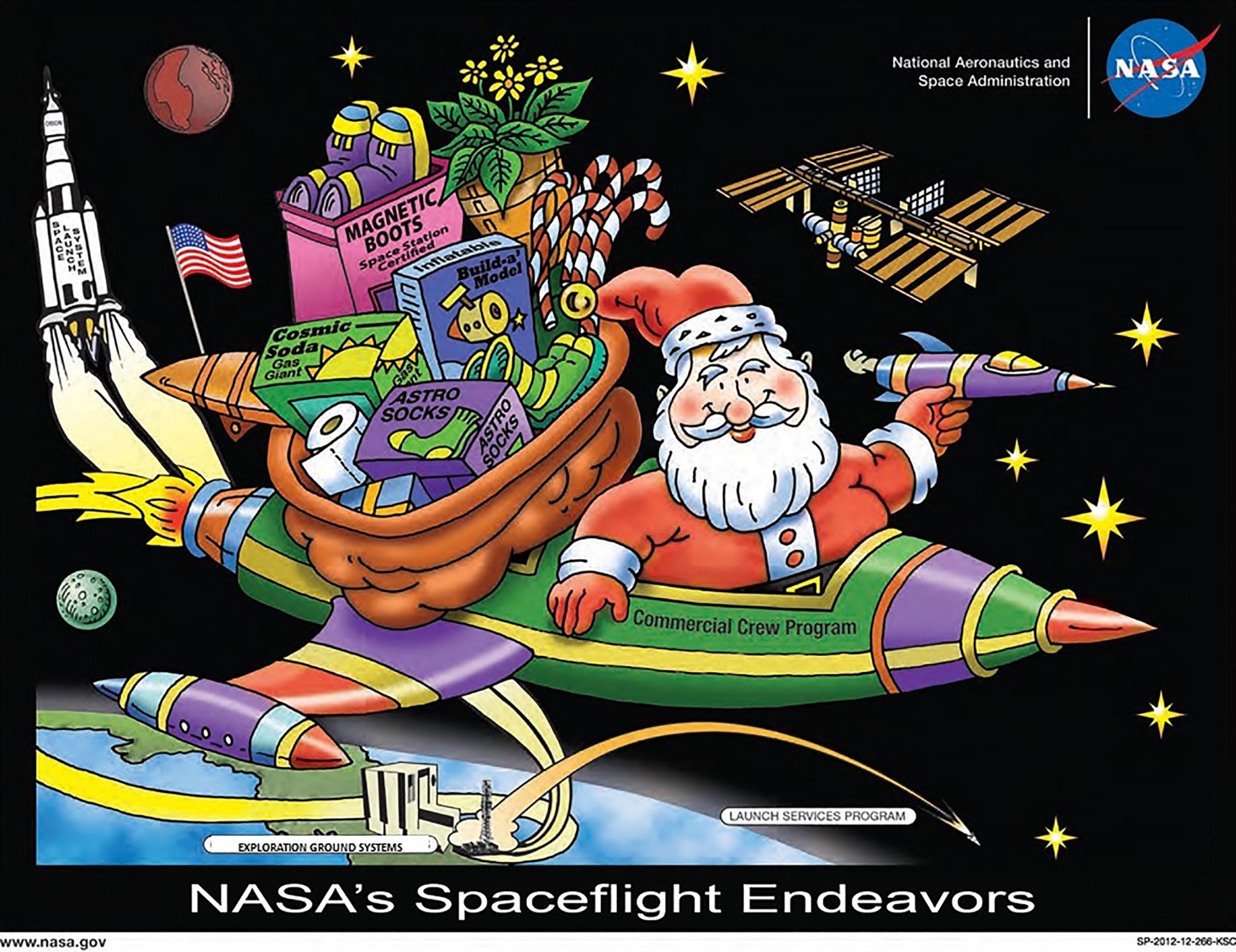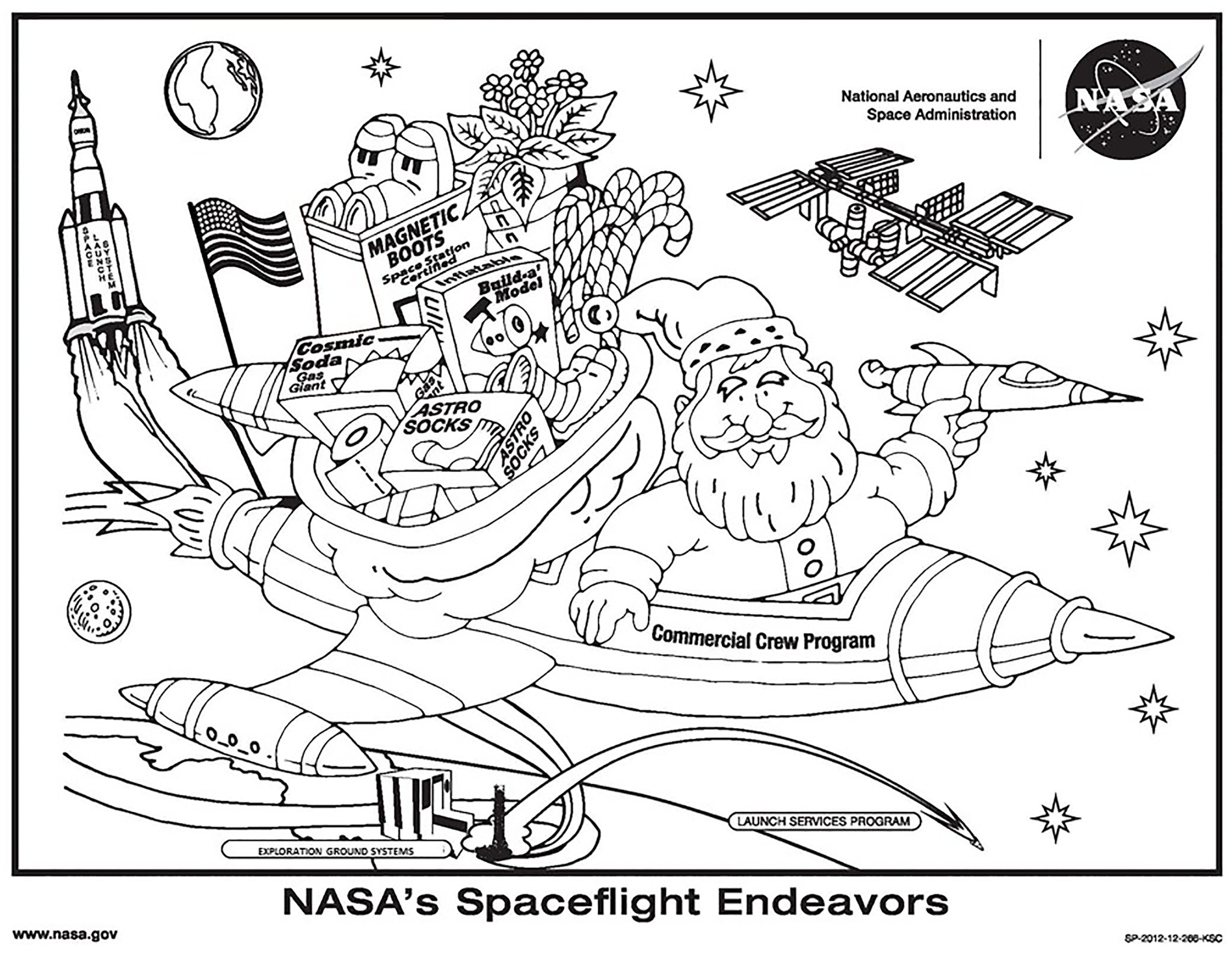By Bob Granath
NASA’s Kennedy Space Center, Florida
NASA’s Kennedy Space Center in Florida is counting down to support Santa Claus during his annual mission to deliver toys and other presents to children around the world. Once again, the agency is making the latest technology at the premier, multi-user spaceport available for Santa’s global trip this Christmas Eve.
Before taking off, Claus will have access to the most accurate, up-to-date weather forecasts using the new Geostationary Operational Environmental Satellite, or GOES-S weather satellite. The spacecraft lifted off from Cape Canaveral Air Force Station in Florida on March 1, 2018, atop a United Launch Alliance (ULA) Atlas V rocket. Launched for NOAA, the satellite is providing faster, more accurate data for tracking wildfires, tropical cyclones, fog and other storm systems and hazards.
As Santa flies across the world, he also may benefit from data supplied by NASA’s Ice, Cloud and land Elevation Satellite-2, or ICESat-2. The satellite is measuring the changing height of Earth’s ice near his home at the North Pole and other areas. NASA and ULA launched ICESat-2 in Sept. 15, 2018, from Vandenberg Air Force Base in California on the final mission of the Delta II rocket.
This past summer, NASA launched the Parker Solar Probe to fly as close as 15 million miles from the Sun. Santa Claus may be interested in the mission’s findings which will help researchers better understand our star and improve their forecasts of space weather events which have the potential to damage satellites, disrupt radio communications and impact flights above the Earth. The Parker Solar Probe lifted off on a ULA Delta IV Heavy rocket from Cape Canaveral on Aug. 12, 2018.
Since Christmas of 2000, the jolly old elf’s annual trip has included one extraterrestrial destination — the International Space Station. In addition to Santa’s delivery and other resupply missions, crews aboard the space station received thousands of pounds of supplies delivered aboard three SpaceX Dragon spacecraft that lifted off atop one of the company’s Falcon 9 rockets launched on Commercial Resupply Services missions from Cape Canaveral.
Kennedy’s three-mile long Shuttle Landing Facility (SLF) runway will be available should Claus and his reindeer need it for a rest stop during their long, Christmas Eve trip. Space Florida now operates the SLF under a 30-year property agreement with NASA.
Santa’s reindeer may notice that deer are among the residents at the Merritt Island National Wildlife Refuge. Covering 140,000-acres, the natural habitat includes hundreds of wildlife species, including alligators, manatees and birds living near the high-tech space center.
While pausing at Kennedy, Claus may want to check out the Orion spacecraft being prepared in the high bay of the Neil Armstrong Operations and Checkout Building for the Exploration Mission 1, or EM-1, flight.
EM-1 will be an unpiloted flight test, the first in a series of increasingly complex missions, providing a foundation for human deep space exploration. During the first flight, Orion will travel 280,000 miles from Earth, thousands of miles beyond the Moon. EM-1 will be a key step in NASA’s deep space exploration program designed to send humans to distant destinations such as the Moon and Mars.
While interplanetary exploration may be a few years away, NASA’s latest mission to Mars — the Interior Exploration using Seismic Investigations, Geodesy and Heat Transport spacecraft, or InSight — will give Santa Claus information on what to expect when his trips include visits to pioneers exploring the Red Planet. NASA and ULA launched InSight on May 5, 2018, on an Atlas V rocket from Vandenberg. InSight is the first mission to peer deep beneath the Martian surface, studying the planet’s interior by measuring its heat output and listening for marsquakes.
Next year, Santa may join astronauts launching to the space station from U.S. soil aboard new spacecraft as part of NASA’s Commercial Crew Program (CCP). The effort is an agency partnership to take astronauts to the orbiting laboratory aboard Boeing’s CST-100 Starliner and SpaceX’s Crew Dragon. CCP was formed to facilitate the development of a U.S. commercial crew space transportation capability with the goal of achieving reliable and cost-effective access to and from the space station and low-Earth orbit.
After the first unpiloted then piloted flights of both the Crew Dragon and Starliner next year, Claus may want to consider a streamlined sleigh designed and built by the American aerospace industry.

























